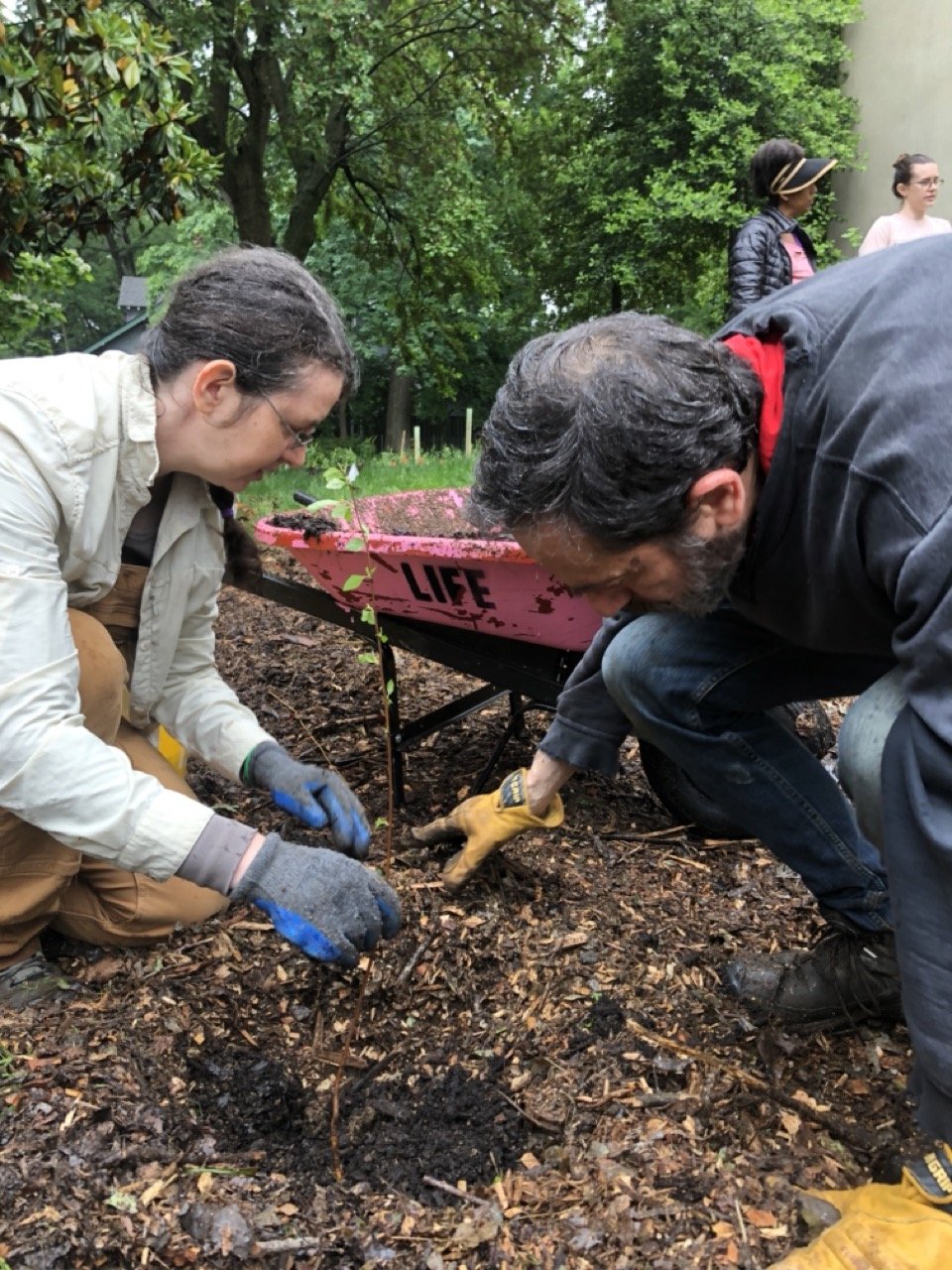
What is a Community Food Forest?
Imagine a garden that looks as lovely as a woodland edge. Imagine it produces an abundance of nutrient-rich food for the community and ultimately needs very little digging, weeding, manual watering, or pest control. Imagine it exists in harmony with animals and humans, providing a beautiful space for community events and education in a way that enhances social cohesion and well-being.
That's a community food forest.
How does it work?
Food forests mimic a natural woodland so we can grow food in a way that allows nature to do most of the work. A food forest combines the same layers found in a natural forest - root crops, ground covers, herbs, perennials, shrubs, vines, small trees, mid-size trees, and canopy trees - to create a rich, thriving ecosystem that provides nutritious food for humans and wildlife. Over time, the food forest maintains its own fertility, requiring relatively little energy to look after.
What are the benefits?
A food forest:
Increases food security & sovereignty
Provides nutrient-rich food for residents
Enhances community well-being
Provides a beautiful space for events
Educates the community
Is sustainable & regenerative
Reduces threat of stormwater & flooding
Is resilient to climate extremes
Boosts wildlife habitat & biodiversity
Shades, cools, and mitigates effects of climate change
Encourages community input and collective work


